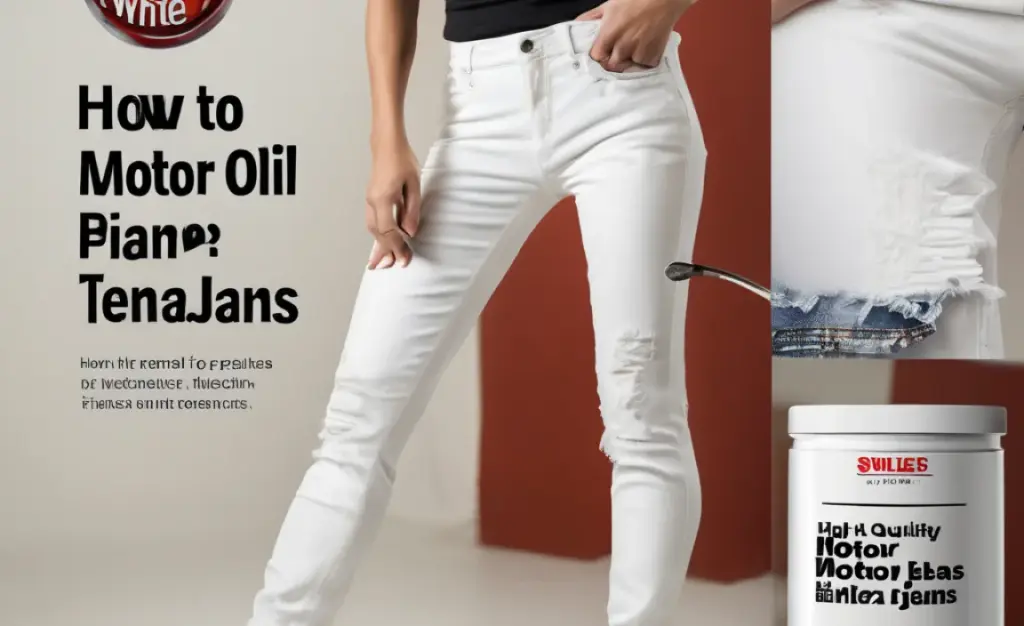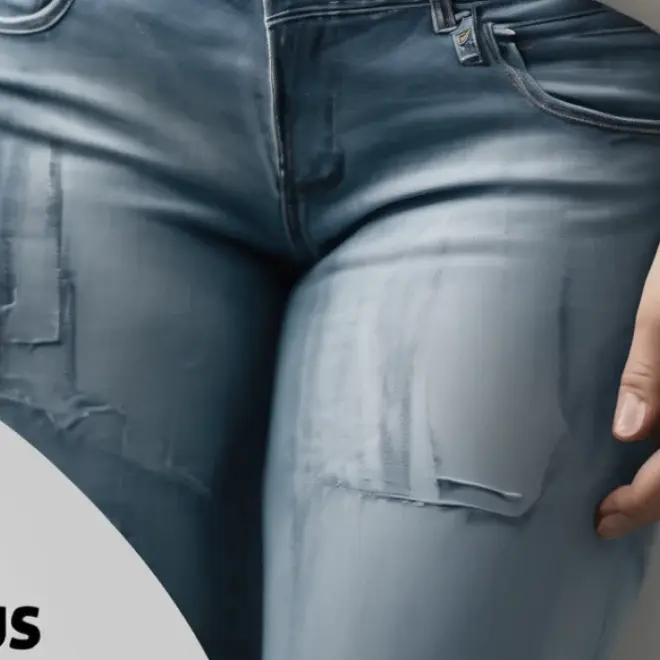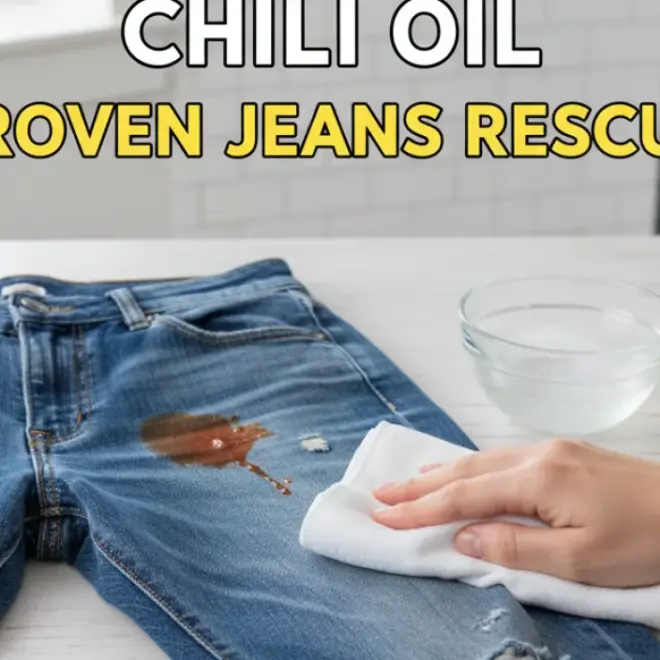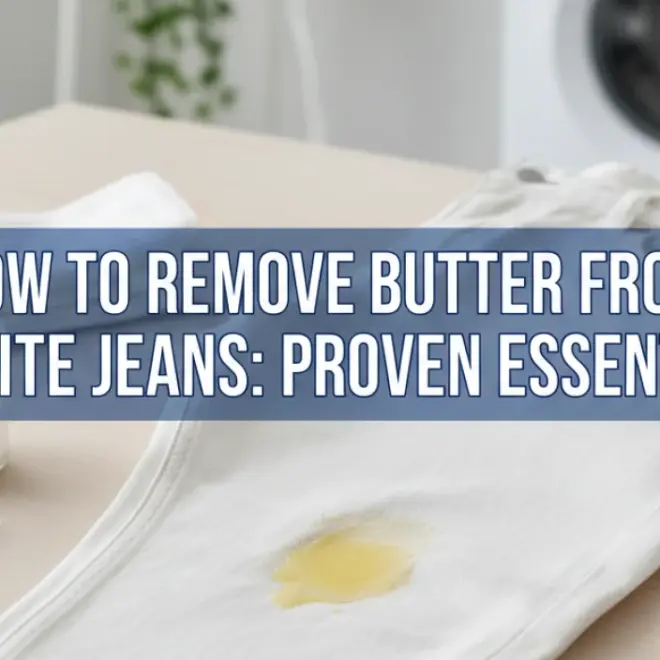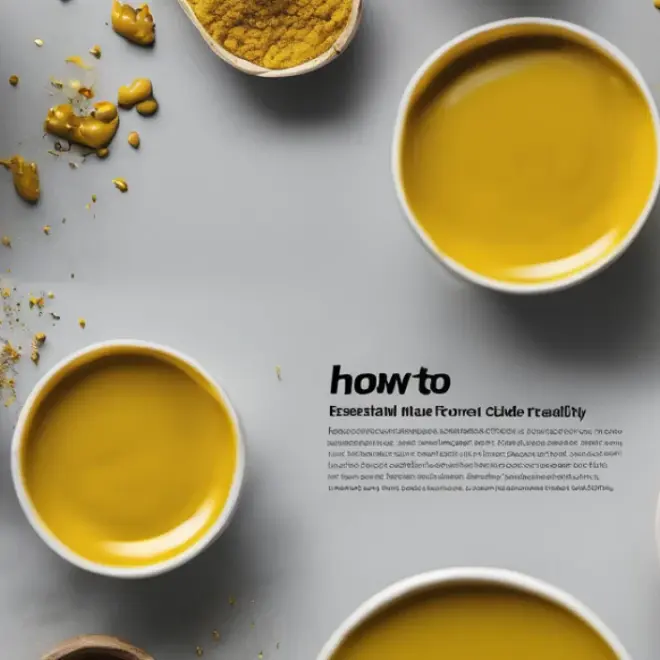To remove motor oil from white jeans, act fast! Start by blotting excess oil, then apply cornstarch or baking soda to absorb it. Follow with a pre-treatment using dish soap or a stain remover, then wash in the hottest water safe for the fabric.
White jeans: they’re a classic, a style statement, and sometimes, a magnet for disaster. A splash of motor oil can feel like a fashion emergency, turning your crisp white denim into a stained mess. But don’t despair! Accidents happen, and with the right approach, those oily splotches don’t have to be permanent. This guide will walk you through simple, effective methods to rescue your white jeans, turning a potentially frustrating situation into a manageable fix. You’ll be back to looking sharp in no time.
Understanding the Enemy: Motor Oil on Denim
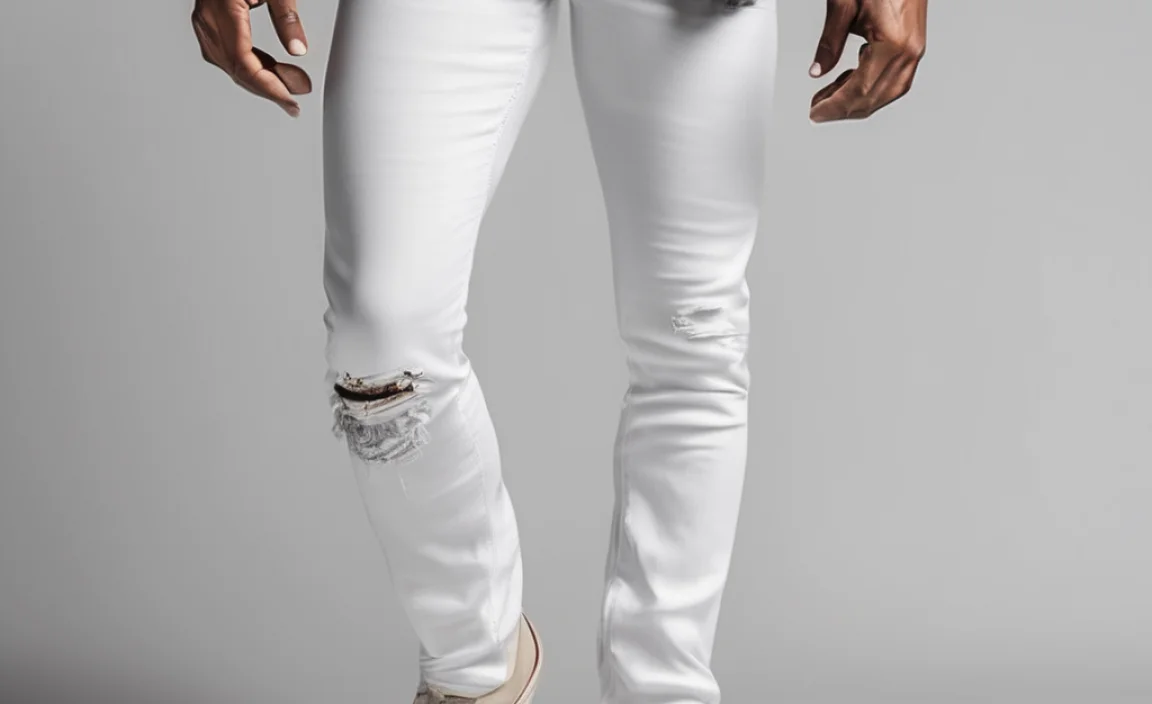
Motor oil is a tough stain, composed of petroleum products that can bind tightly to fabric fibers. When oil hits white denim, its dark color is starkly visible against the bright fabric, making it feel urgent. The key to tackling it lies in understanding its nature: it’s a grease-based stain that needs to be broken down and lifted. Acting quickly is your biggest ally, as oil stains are easier to remove when they’re fresh. The longer oil sits on fabric, the deeper it penetrates the fibers, making removal more challenging.
What You’ll Need: Your Arsenal Against Oil Stains
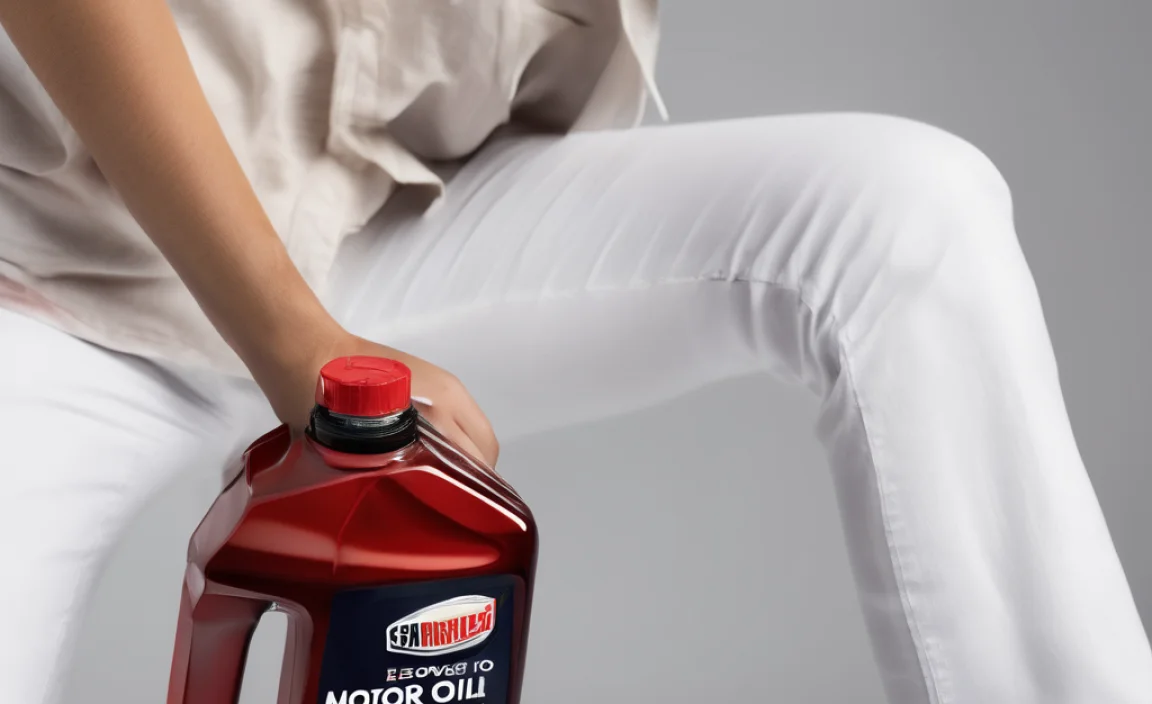
Gathering the right supplies before you start will make the process smoother. You probably have most of these items already in your home.
Essential Tools and Cleaning Agents:
- Paper towels or clean absorbent cloths
- Cornstarch, baking soda, or talcum powder
- Liquid dish soap (a good grease-cutter is best)
- Tough stain remover or laundry pre-treatment spray
- An old toothbrush or soft-bristled brush
- A washing machine
- Cold and hot water
- A dryer (use with caution, heat can set stains)
- Optional: White vinegar, hydrogen peroxide (use with care on specific fabrics)
The Immediate Response: Blot, Don’t Rub

The very first step is crucial. When motor oil first lands on your white jeans, resist the urge to wipe or rub it. Rubbing will only spread the oil and push it deeper into the fabric fibers, making it harder to remove.
Step 1: Blot Away the Excess
Gently place a clean paper towel or absorbent cloth directly onto the oily spot. Press down lightly to absorb as much of the surface oil as possible. Once the paper towel has soaked up some oil, use a fresh section or a new towel and continue blotting. Repeat this until you can’t lift any more oil with the paper towel.
Step Two: The Absorbent Method – Drawing Out the Oil

After blotting, the next step is to draw out the oil that has already begun to soak into the fabric. This is where absorbent powders shine.
Step 2: Apply an Absorbent Powder
Generously cover the oily stain with an absorbent powder like cornstarch, baking soda, or talcum powder. Make sure the powder completely blankets the affected area, extending slightly beyond the stain’s edges. These powders are excellent at absorbing grease. Let the powder sit on the stain for at least 15-30 minutes. For tougher or older stains, you can leave it overnight. The powder will clump as it absorbs the oil.
Step 3: Brush Away the Powder
Once the powder has had time to work, gently brush it off using an old toothbrush or a soft cloth. You’ll likely see that the powder has absorbed a significant amount of the oil, turning clumpy and possibly discolored. You may need to repeat the powder application and brushing if the stain is still very noticeable.
Step Three: Pre-Treating the Stubborn Stain

With the excess oil absorbed, it’s time to tackle the remaining oily residue. This usually requires a cleaning agent that can break down grease.
Step 4: Apply a Grease-Cutting Agent
Liquid dish soap is one of the most effective at cutting through grease. Apply a small amount of liquid dish soap directly onto the remaining stain. Gently work it into the fabric with your fingers or the soft-bristled brush, ensuring it covers the entire stained area. Let it sit for about 5-10 minutes to allow the soap to break down the oil. For more stubborn stains, you can use a dedicated laundry stain remover spray specifically designed for grease and oil stains. Follow the product’s instructions for application and dwell time.
Alternative Pre-Treatment Options:
While dish soap and commercial stain removers are generally safe and effective, here are a few alternatives, with a note of caution:
- White Vinegar: For stubborn stains, you can try dabbing a small amount of white vinegar onto the area after the dish soap. Vinegar can help break down some residues. Rinse the area with cool water afterward.
- Hydrogen Peroxide: For white fabrics only, a solution of hydrogen peroxide mixed with a bit of baking soda can be used as a paste. Apply, let sit for a short while, then rinse. Caution: Hydrogen peroxide can bleach colors, so it’s only suitable for pure white items and should be tested on an inconspicuous area first.
Step Four: The Wash Cycle – Heat is Key (With Caution)
After pre-treating, it’s time for the washing machine. The goal here is to thoroughly rinse out the oil and the cleaning agents.
Step 5: Wash in the Hottest Water Safe for Denim
Check the care label on your white jeans to determine the maximum water temperature the fabric can safely handle. Typically, cotton denim can tolerate hot water well, which is most effective at removing oil. Use your detergent as usual. Add the jeans to the washing machine and select the hottest water setting appropriate for the fabric’s care instructions. For a more robust clean, you can also add a laundry booster or a bit more dish soap directly into the drum.
Importance of Water Temperature:
Hot water helps to emulsify the oil and the cleaning agents, allowing them to be washed away more effectively. Cold water is less effective at breaking down greasy stains. However, always adhere to the garment’s care label to prevent damage or shrinkage. You can find detailed information on fabric care from resources like the Federal Trade Commission (FTC), which provides guidance on understanding garment care labels.
Step 6: Inspect Before Drying
This is a critical step in preventing the stain from becoming permanent. Once the wash cycle is complete, do not put the jeans directly into the dryer. Remove them from the washing machine and carefully inspect the previously stained area. Hold the fabric up to the light to see if any trace of the oil stain remains. If you can still see any hint of oil, do not dry the jeans. The heat from the dryer will set the stain, making it incredibly difficult, if not impossible, to remove.
Step Five: If the Stain Persists – Repeat and Rinse
If you still see signs of the oil stain after the first wash, don’t give up. It’s common for tough stains like motor oil to require a second attempt.
Step 7: Repeat the Pre-Treatment and Washing Process
If the stain is still visible, repeat steps 2 through 6. You might need to be a little more thorough with the pre-treatment this time. Apply the dish soap or stain remover again, let it sit longer, and then wash the jeans again, again using the hottest water safe for the fabric. Sometimes, a third attempt may be necessary for very stubborn or aged oil stains.
Consider a Soak for Deep Cleaning:
For extremely stubborn stains that resist repeated washing, consider soaking the jeans. You can soak them in a solution of warm water and an enzyme-based laundry detergent or a specialized stain remover for several hours or overnight before re-washing. Ensure the entire stained area is submerged in the soaking solution.
Step Six: Drying – The Final Stage
Once you are absolutely certain that the oil stain has been completely removed, you can proceed with drying.
Step 8: Air Dry or Tumble Dry on Low
The safest bet to ensure the stain is gone is to air dry your white jeans. Hang them up and let them dry naturally. This way, if any faint trace of the stain reappears as the fabric dries, you can catch it before it’s permanently set. If the stain appears to be completely gone and you want to use a dryer, tumble dry on a low heat setting. High heat can still cause damage or shrinkage, even to a clean garment.
Tips for Different Types of Oil Stains
While motor oil is the primary focus, the principles apply to other types of oil stains as well.
| Type of Oil Stain | Specific Considerations |
|---|---|
| Motor Oil (Engine Oil) | Most challenging. Requires aggressive degreasers like dish soap and high heat washing (if fabric allows). Act fast is paramount. |
| Cooking Oil (Vegetable, Olive, etc.) | Easier to remove than motor oil. Dish soap is usually sufficient. Soaking may help if it’s an older stain. Normal washing cycles often suffice after pre-treatment. |
| Grease from Hair Products | Similar to cooking oil. Product build-up can sometimes make it trickier. A good degreaser and warm water wash are effective. |
| Butter/Margarine Stains | These are fatty rather than pure petroleum. Pre-treat with dish soap, then wash in warm or hot water. |
What About Older or Set-In Oil Stains?
Older oil stains are more challenging because the oil has had more time to bond with the fabric fibers. The process remains largely the same, but you’ll likely need to be more patient and persistent.
- Extended Soaking: For set-in stains, a longer soak in a strong detergent solution or enzyme cleaner might be necessary.
- Repeat Treatments: Be prepared to repeat the blotting, powder absorption, pre-treating, and washing steps multiple times.
- Professional Cleaning: If after several attempts the stain persists, consider taking the jeans to a professional dry cleaner. They have specialized solvents and equipment that may be able to lift deeply set stains. Be sure to point out the stain and let them know it’s motor oil.
Preventing Future Oil Stains
While accidents happen, a few preventative measures can save your white jeans from future mishaps.
- Be Mindful in Risky Situations: When working on cars, doing oily maintenance, or cooking with a lot of grease, consider wearing older clothes or an apron.
- Store Away from Contaminants: Ensure your closet or laundry area is free from oil drips or leaks that could transfer to lighter garments.
- Pre-Treat Potential Areas: For those who work with machinery often, consider applying a laundry pre-treatment spray to areas prone to oil stains (like knees and cuffs) before wearing the jeans.
Frequently Asked Questions About Removing Oil Stains
Q1: Can I use regular laundry detergent to treat the oil stain?
While regular laundry detergent is good for washing, liquid dish soap is generally more effective for spot-treating grease and oil stains because it’s formulated to cut through tough grease. However, a good quality laundry detergent can be used as a pre-treatment if you don’t have dish soap.
Q2: How long should I leave the cornstarch or baking soda on?
For best results, leave the absorbent powder on for at least 15-30 minutes. If the stain is older or more stubborn, leaving it overnight can significantly improve its removal. The powder needs time to draw the oil out of the fibers.
Q3: Is it safe to use bleach on motor oil stains on white jeans?
Chlorine bleach can sometimes be used on pure white cotton or linen fabrics, but it’s not always the most effective way to remove set-in oil stains. It works by oxidizing color, but oil is a different kind of substance. In some cases, bleach can even react with oil residues and cause yellowing. It’s better to tackle oil with degreasers first. If you do use bleach, ensure your jeans are made of a bleach-safe material, and always follow product instructions carefully. Oxygen bleach is a gentler alternative for whites.
Q4: What if the stain looks gone, but reappears after drying?
This indicates that some oil residue remains. The heat from the dryer likely made it less visible temporarily, but it will resurface. Do NOT put the jeans back in the dryer. Instead, repeat the pre-treatment and washing steps. Ensure the jeans are completely dry (air-drying is best for this stage) before you consider them fully cleaned.
Q5: Can I use an iron on the stained area?
No, avoid ironing an oily stain. The heat from an iron will quickly set the stain into the fabric fibers, making it much harder, if not impossible, to remove. Always ensure the stain is completely removed before ironing.
Q6: My jeans are a blend fabric (not 100% cotton). What should I do?
Always check the care label on your blend fabric jeans. For blends, you may need to use cooler water temperatures than you would for pure cotton. Be cautious with stronger stain removers or hydrogen peroxide, as they can sometimes affect synthetic fibers or dyes in blends. Gentle pre-treatment with dish soap and a warm water wash (if permitted by the care label) is usually the safest approach.
Conclusion: Your White Jeans Saved!
Dealing with a motor oil stain on white jeans can seem daunting, but as you’ve seen, it’s a manageable problem. By acting swiftly, using the right absorbent materials, employing an effective degreaser, and washing correctly, you can successfully lift those stubborn oily marks. Remember the golden rule: always inspect for the stain before drying. Patience and persistence are key, especially with older stains. With these steps, you’re well-equipped to rescue your favorite white jeans and maintain their pristine look, ensuring they remain a stylish staple in your wardrobe for seasons to come. So, the next time an oily accident happens, don’t panic – reach for this guide and restore your denim!


